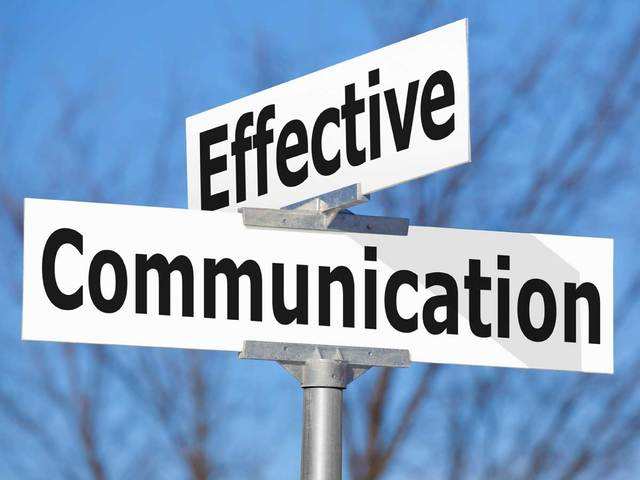
Effective Communications
Communicating as a RiderCoach is an essential but sometimes difficult skill. The reason communication can be difficult are the variations and complexities associated with the teacher-learner transaction, based on too many factors to realistically discuss. In just about every misunderstanding or disagreement, an examination of the communication process and its main elements can reveal the significant issue that if corrected can enhance the coaching process. Improvement of communication rests in reflecting on the intent and understanding an effective communication process.
Basic Elements
When one person provides ideas or feelings to another person, or a group of people, it is measured by determining how much of the idea was transmitted and how much was received. To examine this further, the process is composed of three elements: 1) The source (RiderCoach, Student[s], Writer); 2) The medium (words, signs, expressions); 3) the receiver (RiderCoach or Student[s]). These elements are dynamically interrelated and whatever can influence one, will influence the others. If a receiver has difficulty understanding the medium, indicating confusion, the source has an obligation to reframe the medium – or risk losing the impact of the idea, effectively losing the benefit of the communicating altogether. On the other hand, when the receiver reacts favorably to the medium, the source can then continue knowing that the message was received. The relationship is dynamic and reciprocal, making efforts to maintain a “good” relationship essential. Communication remains a complicated, two-way process.
Source
The effectiveness of acting in a communicative “source role” is also related to at least three factors: 1) The judgement associated with selecting and using language, signs, and expressions that is meaningful and influences the receiver; 2) The revealing of attitudes by the source toward the information and ideas they are trying to transmit to the receiver (consciously and subconsciously) as believable and important enough to know; and 3) The transmission from the source that the information is accurate, up to date, and stimulating enough to be of interest by the receiver.
Communicators (sources) must use great care to ensure they are communicating ideas and feelings that are meaningful to the receivers. It is much too common that a source depends on a highly technical or professional background, and the associated vocabulary, which is only meaningful to someone like them. Reliance completely on technical language to express ideas to any receiver can impede effective communication. Likewise, using terms that do not emphasize the appropriate content can also deter communications, perhaps missing key instructional information. Scripts based upon field testing and experience can be extremely beneficial in achieving the needed language, then use of small variations to help translate for the exceptions is of lessor need.
Media
At the most basic level, communication is achieved using simple oral and visual codes. The alphabet translates a visual code into words and ideas. Common gestures and facial expressions can be as informative as words and print, yet are seldom used in isolation from speaking and text. True ideas are only communicated when combined with several meaningful parts into wholes like full ideas, sentences, chapters, discussions, or previous experiences. Each part of the whole becomes more important to the idea of effective communication to be analyzed for understanding. Think of gross to fine and part to whole in motor skill development. The communication is received when the appropriate conclusion matches the intent to be received.
The development of ideas from media culminates from determining the best medium suited for transmission to the receiver. In most cases using all available mediums (oral, visual, tactile) works best for effective communication. By using a variety of methods, the source is more likely to transmit to the receiver in a way that is understood and meaningful for all.
Receiver
There is only one thing that is the most important part of the teacher-student transaction to highlight the success of effective communications, and that is the action of the receiver to the message. When receivers react with appropriate behaviors displaying understanding, then and only then has the communication successfully taken place. For receiver acceptance, there is another three characteristics in the process that must be understood: 1) the receiver’s ability; 2) the receiver’s attitude; and 3) the receiver’s previous experiences.
The receiver must be able to question and comprehend the ideas that are being transmitted to them by the source. Sources have a responsibility to provide an environment that encourages questioning and also provide the facility to answer the questions. Questions themselves can be direct or silent, so the source of the communication must be able to listen and see the receiver’s ability to understand the process of communication.
Secondly, a receiver’s attitude may be one of resistance, willingness, or neutrality. The communicator must be able to gain the receiver’s attention and keep it during the transfer of knowledge, hopefully this will continue after the communication has been completed. If the source can vary the methods of communications (I say again) the more likely they will be in transferring the information.
Lastly, the receiver’s previous experiences are the gateway or framework for successful communications. As discussed in previous articles, a RiderCoach must get to know the student or in this case the source should understand something about the receiver to better know how to communicate with them. There is an obligation to assess the receiver’s knowledge and use it as a guide for the selection of how to approach ideas so the receiver can easily understand. To capture a receiver’s interest, the source must first associate with them on the same level.
This is only a primer on communication, next time the discussion will be about the barriers to effective communication. Until then Ride and Coach safe!
Originally Published April 24, 2017 on LinkedIn
© 2017, Donald L. Green, Rider Choices










